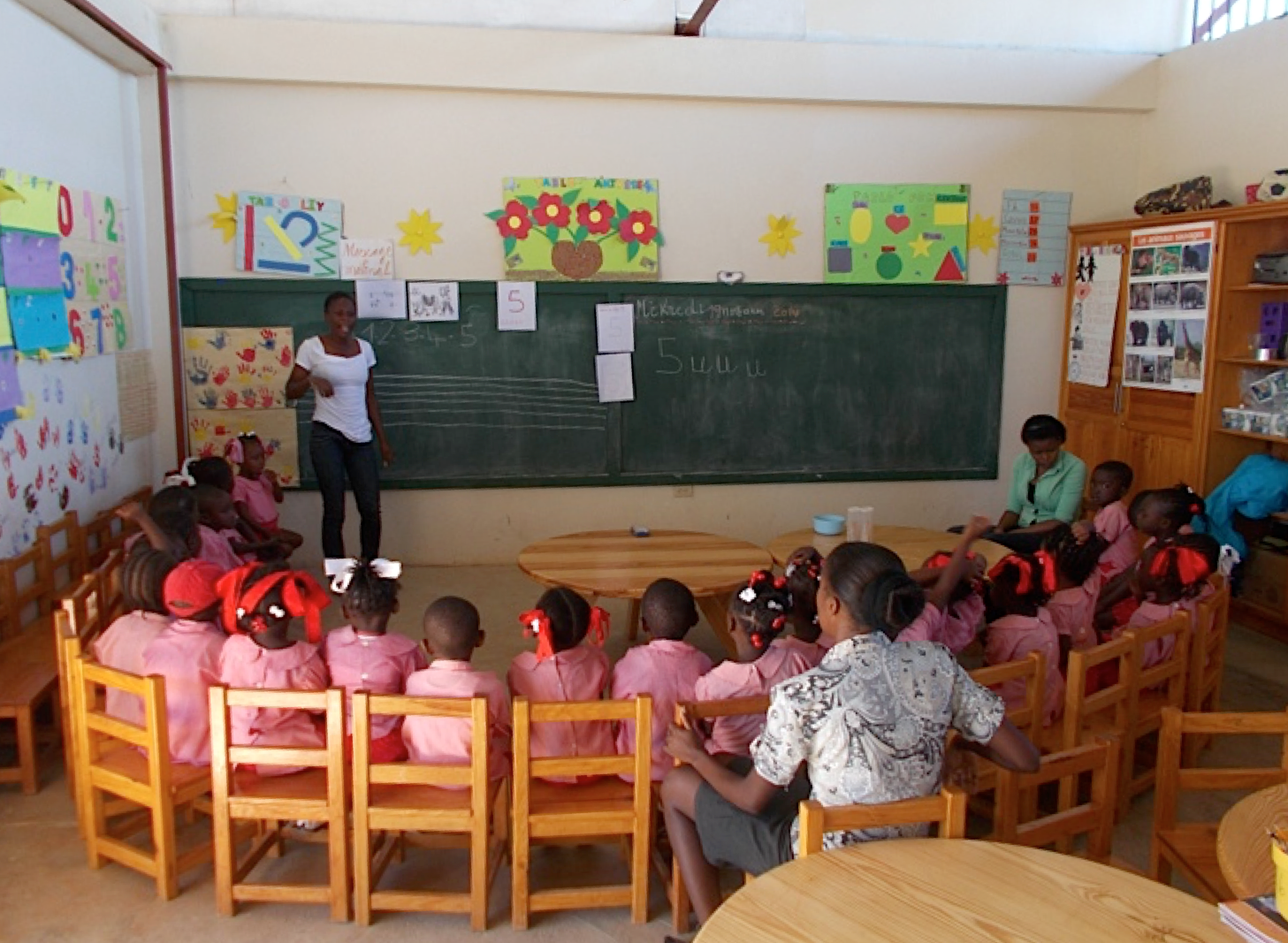
With the school year well into its third month, patterns are starting to emerge. “I especially like the way the kids have taken to pre-calculation,” Francesse explains.
That is what they call the activities that prepare kindergarteners for the math they will learn as they enter elementary school. Francesse puts a number on the wall each morning next to a picture of the number of things that the number represents. When the kids come in, they are supposed to sit down for their morning circle, the time every day when they talk about whatever is on their minds. It’s a way to start them talking and listening to one another. “But this year, they look for the number I’ve put up right away. They ask me if they are going to count. They like counting together.”
When they finish the opening circle, Francesse sends them to where they keep their Cuisinaire rods, small blocks that represent different quantities. Every one has to take a number of blocks that corresponds with the number she’s posted. “When they all have their blocks, they count how many they’ve taken. Most take the right number, but a few have to correct themselves.”
Francesse is most struck by how much the kids like doing math, and how different that is from her own education. “We were forced just to copy the numbers that our teacher wrote on the board. Over and over. We didn’t like it.”
When she first started teaching at a school uphill from Ba Osia, in Blanchard, she tried to make math more concrete than her teachers had made it for her. “When we studied fractions, I came to school with an orange. I peeled it, and pulled apart its segments.”
But at ADECA, she is educated and encouraged to teach as she has always wanted to teach. The staff has received training in a student-centered approach developed by mathematician Caleb Gattegno. The approach develops an intuitive sense of quantity with exercises that use the rods. There are unit blocks, sticks of ten units that can represent tens, and ten-by-ten plates that represent hundreds. As the kids grow and learn, they will use them as concrete guides for increasingly sophisticated math concepts.
What is central to the approach is the way it focuses on student development, rather than on specific math concepts and operations. Francesse sees the kids’ excitement every day.
The kids are the ones who benefit. As Beverly, one of her students says, “I like it when we count the blocks!”